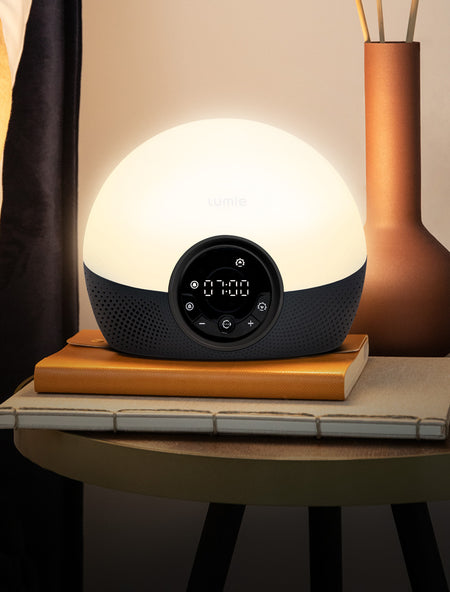Bright Light Therapy FAQs
What is light therapy and how can it help me?
Just as sunlight naturally makes you feel good, topping up with extra bright light in the winter months, or when you're stuck indoors, is proven to put you in a better mood and make you feel more awake. Using a lightbox every day makes a big difference to symptoms of SAD such as tiredness, over-eating and a lack of energy and motivation.
What is Lux?
Lux is a measure of the intensity of visible light received by the subject at a given point. Since light is brightest and strongest at its source and becomes less intense with distance, the lux level stated for any lightbox is only meaningful if it also says at what distance.
Lumie Brazil, our most powerful lightbox easily provides 10,000 lux at 35cm. Due to the smaller surface area of more compact lights, you need to have them closer to receive 10,000 lux. If this is not practical or comfortable, you can simply use them for longer instead.
When should I use my light?
Most people find that light therapy in the mornings works best so, if you are just starting out, try this first. After a week or so, if you're not feeling much different, try introducing another session in the afternoon.
If you don't have time in the mornings, then using a light in the afternoon will still be better than not using one at all. Try not to use your light late in the evening though (i.e. within 3 hours of going to bed) as you may find it difficult to get to sleep.
If you have trouble waking up in the mornings, then you should definitely use a dawn simulator. If this isn't enough, then use a light as well even if you only have time for a 10-minute rather than 30-minute session, and again top up later.
How long should you use it for and how long does it take to work?
Generally speaking, the brighter the light, the less time it takes to use. Our quickest lightboxes have a treatment time of just 30 minutes a day. We recommend using it every day to experience the maximum benefits.
You should expect to feel the benefits within the first 1-2 weeks of using the light. We offer a 45-day trial with our products so this should be long enough to determine whether you are going to experience the benefits of light therapy.
How far away do I need to be from the light?
We recommend using our lightboxes at approximately an arms’ length away from you.
Do I need to stare directly into the light?
We do not recommend staring directly into the light as you will find this quite uncomfortable due to how bright the light is.
Placing the lamp at the correct distance and continuing with your usual daily activities (reading, on the computer, watching TV, eating breakfast etc.) is the best and most comfortable way to use the light.
Is light therapy safe?
The bright lights used in light therapy are extremely safe and there are no indications that light boxes cause any damage to the eye. They produce only a tiny amount of UV (ultra-violet) light - much less than normal daylight - so if you are worried about your skin or have been told to avoid UV, this won't be a problem.
Lumie advise anyone with major eye problems to consult their specialist before starting any form of light therapy.
Can I wear my glasses?
Glasses or contact lenses will be fine if they're clear. On the other hand, sunglasses, photo-sensitive or tinted lenses will reduce the effectiveness of light therapy because less light will reach the all-important receptors at the back of your eyes.
What about blue light blocking glasses?
We have not measured the impact of blue light blocking glasses. Blue light in small quantities can boost alertness - but for the treatment of SAD it is the lux level (light intensity received at the eyes) which is the important factor.
Wearing blue light filter glasses will reduce the blue light reaching your eyes and the additional alertness that you may experience. It will have less impact on the lux level delivered by the lights, especially those with warmer light such as Lumie Brazil which emit low levels of blue light, so may not affect greatly the treatment of SAD.
Can children use light therapy?
We do not recommend children under the age of 7 to use our SAD lights, as their eyes are still developing. However, our wake up lights and Lumie Bedbug would be suitable for any age, including babies and young children.
Want to learn more about the benefits of light therapy?
Take a look at our Feel Good Edit! Our curated and well-researched articles cover the latest trends, advice, and science of light therapy, wellbeing, mental and physical health, and more.















